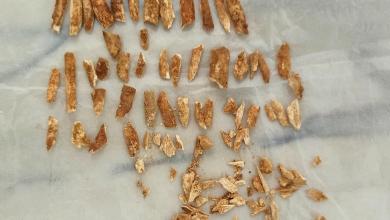Artist as Philanthropist: Why Giving Back Is Important

When Julie Mehretu donated $2 million to the Whitney Museum of American Art, she did more than just support an institution that helped shape her career—she reignited a debate about A discussion of the evolving role of the artist as philanthropist. Her donation, which funds free admission for visitors 25 and under, highlights a growing trend of artists using their own money to successfully drive cultural change.
Artists giving back to their communities outside of their lifelong practice is nothing new. Picasso’s substantial donations to Spain and France, Joan Miro’s Miro Foundation and Louise Bourgeois’ Easton Foundation (to name just a few) ensured that their influence lasted long after their deaths It can still be felt for a while. These artists understand that reinvesting in the cultural ecosystem may leave a mark that outlasts them, and that through conscious giving, they can better impact not only the art world, but society itself.
Unlike the above, Mehretu’s initiative stands out. Instead of indulging in a gesture that might feel like a shrine to a personal story, Mehretu’s gifts extend beyond her own practice. This artist transcended the confines of her personal legacy to support a project that impacted thousands of people—most of whom may not even know her name.
Cynics might argue, however, that $2 million has limited meaning in the museum world, and that this form of donation may end up being more of a symbolic gesture than an agent of lasting change. Reality is more nuanced than that. While such an amount may not revolutionize the museum’s finances, the move signals a deeper shift in artist philanthropy: a recognition that the true power of donations lies in collective impact, rather than individual accolades.


Many others are also going beyond traditional donations to high-profile institutions. Some artists are creating independent spaces such as residencies or foundations to invest directly in social change through mentorship, community uplift, and practical action with measurable results. While not all artist-driven philanthropic initiatives achieve the desired results—some may appear performative, blur the lines between philanthropy and personal branding, and sometimes even veer into vanity projects—many are sincere expressions of giving back . This marks a new era of artist-driven impact, challenging the traditional museum-centric model of arts philanthropy.
Take Mark Bradford’s Los Angeles-based company, for example Art + Practice. Rather than dedicating his resources to traditional institutions, Bradford established a foundation closely aligned with his vision: to provide critical support for the training of young people and free admission to contemporary art exhibitions. His initiative reflects how artists can be direct agents of change, forging paths where institutions sometimes hesitate—a powerful statement, a model of social responsibility, and an invitation to reimagine the role of the artist.
See also: World Trade Center offers case study on creating space for artists in urban centers
Not every artist’s contribution needs to be large-scale to have a meaningful impact. In fact, some of the most innovative artist-led initiatives start with modest budgets and big ideas, driven by a clear purpose and vision.
Kader Attiyah Laccoloni The event in Paris showed that even a well-focused grassroots initiative can have a profound impact and have ripple effects throughout a community. Established as a cultural space for debate and activism, Laccoloni Hosting events, lectures and exhibitions on social justice, decolonization and diversity. Atiyah’s initiative shows that artists don’t need large sums of money to make a difference, but rather work to address pressing issues and have a targeted impact that ripples through entire communities.
Olafur Eliasson little sun Projects are another powerful example. Eliasson creates solar lanterns for communities without electricity – using his artistic skills to solve real-world problems while expanding the idea of ”giving back.” Engaging artists as partners, not just donors, allows institutions to remain relevant, dynamic and responsive to contemporary issues.
As artists become increasingly wealthy and take on new roles as philanthropists and cultural change makers, it’s clear that, if done right, giving back can become a powerful and defining force in the art world. The gift of Mehretu is only a small part of a larger picture: a reminder of the potential and power that artists have to shape and sustain cultural landscapes.
While many artists will choose to invest in traditional institutions, others are carving out their own spaces, establishing new foundations and independent projects that reflect their beliefs. Regardless, the conversation is evolving, and in a world where access to the arts is often unequal, artists giving back—whether through multimillion-dollar donations to museums or through grassroots initiatives—can make a difference.




